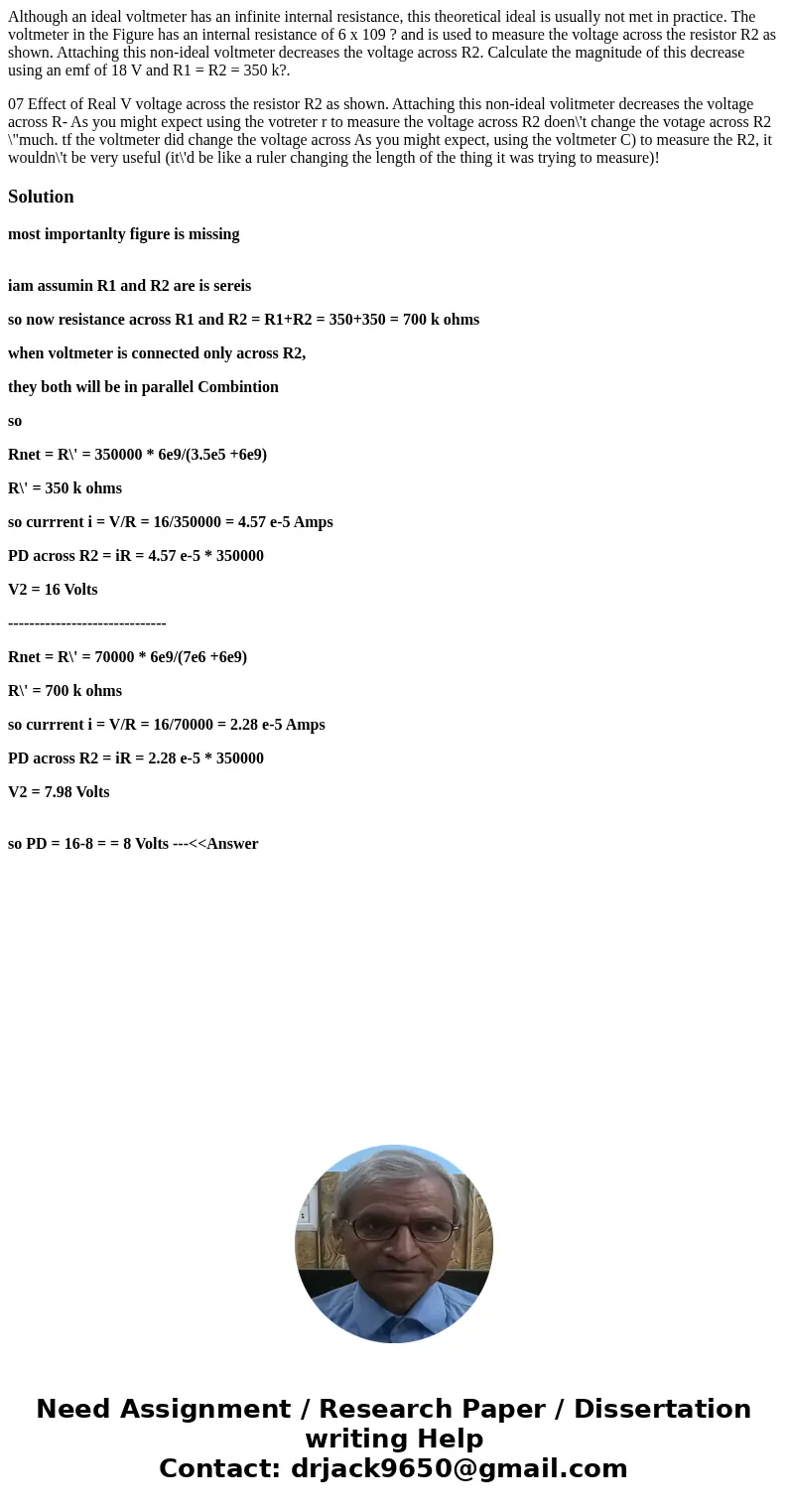Although an ideal voltmeter has an infinite internal resista
Although an ideal voltmeter has an infinite internal resistance, this theoretical ideal is usually not met in practice. The voltmeter in the Figure has an internal resistance of 6 x 109 ? and is used to measure the voltage across the resistor R2 as shown. Attaching this non-ideal voltmeter decreases the voltage across R2. Calculate the magnitude of this decrease using an emf of 18 V and R1 = R2 = 350 k?.
07 Effect of Real V voltage across the resistor R2 as shown. Attaching this non-ideal volitmeter decreases the voltage across R- As you might expect using the votreter r to measure the voltage across R2 doen\'t change the votage across R2 \"much. tf the voltmeter did change the voltage across As you might expect, using the voltmeter C) to measure the R2, it wouldn\'t be very useful (it\'d be like a ruler changing the length of the thing it was trying to measure)!Solution
most importanlty figure is missing
iam assumin R1 and R2 are is sereis
so now resistance across R1 and R2 = R1+R2 = 350+350 = 700 k ohms
when voltmeter is connected only across R2,
they both will be in parallel Combintion
so
Rnet = R\' = 350000 * 6e9/(3.5e5 +6e9)
R\' = 350 k ohms
so currrent i = V/R = 16/350000 = 4.57 e-5 Amps
PD across R2 = iR = 4.57 e-5 * 350000
V2 = 16 Volts
------------------------------
Rnet = R\' = 70000 * 6e9/(7e6 +6e9)
R\' = 700 k ohms
so currrent i = V/R = 16/70000 = 2.28 e-5 Amps
PD across R2 = iR = 2.28 e-5 * 350000
V2 = 7.98 Volts
so PD = 16-8 = = 8 Volts ---<<Answer

 Homework Sourse
Homework Sourse